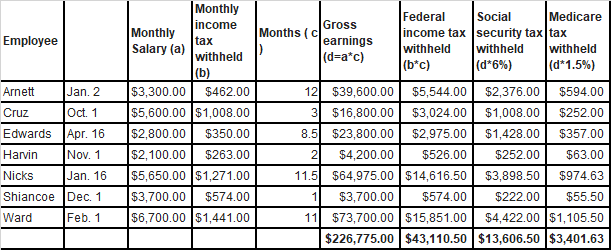What is TDS?
What is TDS?
TDS stands for tax deducted at source. As per the Income Tax Act, any company or person making a payment is required to deduct tax at source if the payment exceeds certain threshold limits. TDS has to be deducted at the rates prescribed by the tax department.
XYZ Ltd makes a payment of Rs 50,000/- towards professional fees to Mr. ABC, then XYZ Ltd shall deduct a tax of Rs 5,000/- and make a net payment of Rs 45,000/- (50,000/- deducted by Rs 5,000/-) to Mr. ABC. The amount of 5,000/- deducted by XYZ Ltd will be directly deposited by XYZ Ltd to the credit of the government.
1) What Is TAN and How to apply for TAN?
TAN stands for Tax Deduction Account Number. It is 10 digit alpha numeric number required to be obtained by all persons who are responsible for deducting or collecting tax. Under Section 203A of the Income Tax Act, 1961, it is mandatory to quote Tax Deduction Account Number (TAN) allotted by the Income Tax Department (ITD) on all TDS returns. The procedure for application of TAN is very simple and can be done online by filling up Form 49B.
2) What is TDS Certificate?
TDS certificates are issued by the deductor (the person who is deducting tax) to the deductee (the person from whose payment the tax is deducted). There are mainly two types of TDS certificates issued by the deductor.
- Form 16: which is issued by the employer to the employee incorporating details of tax deducted by the employer throughout the year, and
- Form 16A: which is issued in all cases other than salary.
For example, Mr. Gupta is working as a salaried employee at a company and tax is deducted on his salary @ 15%. The company shall provide Mr. Gupta with a Form 16 describing particulars in detail regarding the amount of salary paid and tax deducted on the same.
However, had Mr. Gupta been working as a professional and received professional fees from an organization which is subject to TDS, then he will be provided Form 16A for the same.
3) How much tax should be deducted from salary?
Persons responsible for paying salary are liable to deduct tax on estimated salary at prescribed rate of 15% subject to following:
- Exemption Limit: No tax is required to be deducted at source unless the estimated salary exceeds basic exemption limit.
- Exempt allowances: Allowances such as LTC, HRA, conveyance, travelling exempt as per prescribed limits and other perquisites not forming part of salary should be deducted from total salary while calculating taxable salary.
- Other deductions: Other deductions such as deductions under section 80C, 80CCC, 80CCD, 80CCG, 80D, 80DD, 80DDB, 80E, 80EE, etc. should be considered before the calculation of tax on salary.
4) Which are the different forms prescribed for TDS Return?
What is TDS return?
A deductor has to deposit the deducted TDS to the government and the details of the same have to be filed in the form of a TDS return. A TDS return has to be filed quarterly. Different types of TDS deductions have to be filed using different TDS return forms.
Before that we will get a general idea about which forms are applicable to different cases. These forms are to be prepared in consultation with your tax advisor to avoid any mistake and then to file corrected TDS return.
| Form | Detector type |
| Form 24 Q | Deductions made in a salaried case |
| Form 26 Q | Deductions made in the non-salaried case |
| Form 27 Q | Deductions made in the case of NRIs |
Now that we know the different forms, in the below table we can see the due dates for different forms and different quarters as well:
| Quarter | Form 24Q & 26Q | Form 27Q |
| April to June | 15 July | 15 July |
| July to September | 15 October | 15 October |
| October to December | 15 January | 15 January |
| January to March | 15 May | 15 May |


Comments
Post a Comment